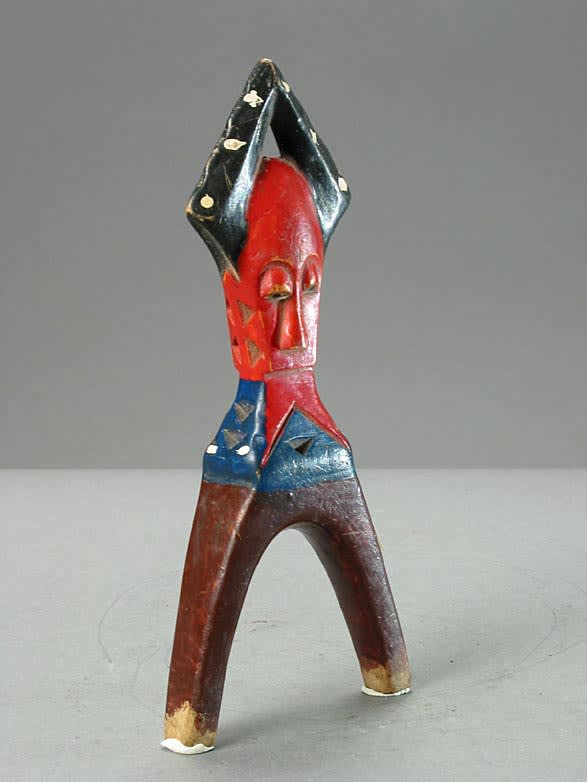Baule Wooden Slingshot, 20th Century CE
Wood and Paint
7.9 x 17.8 cm
3 1/8 x 7 in
3 1/8 x 7 in
PF.5893
Further images
In the west, one is likely to associate the slingshot with mischievous young boys. In Africa, the same is true. Slingshots are carried by young boys for hunting birds and...
In the west, one is likely to associate the slingshot with mischievous young boys. In Africa, the same is true. Slingshots are carried by young boys for hunting birds and bats in the forest, one of the rare sources of protein in their diets. However, in the forest, danger abounds. These slings served not only to down the prey, but also to protect the boys from snakes, dangerous insects, and the occasional predator. The slings are usually made by the father of the boy who may or may not be a sculptor by trade. However, wealthy families mostly commissioned sculptors to carve slings for their boys. These two factors explain the general discrepancies in the artistic quality of the slings. The carvings that decorate the handles are talismanic, meant to protect the boys. Most carvings are of deities or woodland spirits. Other subjects such as the representations of weapons or animals enhance hunting power and the chances of success. The variety is virtually endless. Masks are another favorite subject matter. This slingshot appears to take on the form of a stylized animal mask. Although the facial features are undoubtedly human, two large horns rise from the top of the face, painted red. When one imagines venturing through the heart of the forest armed only with this small slingshot, the bravery of this young boys becomes apparent, as does the need for the protective forces that decorate the handle.





